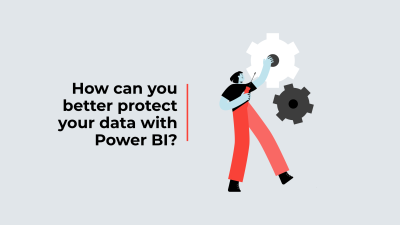OPTIMIZE YOUR BUSINESS DECISIONS
The digital age in which we currently live is constantly enriched with data.
It’s hard to imagine the enormous amount of data generated by applications managing business processes as well as the one coming from Big Data and even the Internet of Things (IoT). These data sources are goldmines of information that your company can draw on to make measured, well-thought-out business decisions. To be of real value, the data must be collected and stored in a structured and organized manner so that it can be easily found for future use.

How can data help you make decisions?
Data is a reliable source. When properly structured and analyzed, it is the best measure to make informed decisions based on real facts and define performance indicators that will help you avoid mistakes and stay aligned with your business goals.
Here are some business decisions you can make based on the acquired data :
- How to increase sales?
- How to optimize operations?
- How to direct my advertising?
- How to improve the performance of your teams?
To make the right decisions, you will need to analyze the different KPIs (performance indicators) of your data, according to several criterias (for example, different time periods). Once you have compared your findings, you will have all the information on hand to take action.
To ensure that data is well integrated into your company’s decision-making, you must also strive to establish a data-driven culture directly within your teams and work processes so that data management becomes an integral part of your employees’ daily lives.
What are the factors to consider in order to make the most appropriate choices?
In order for your data modeling to be done in an optimal way, it is necessary to analyze certain factors to have a better understanding of your needs and therefore maximize your results.
Factors to consider:
- What is your data history? Do you have one? What types of data are in it and in what form?
- What is the current volume of data? What are the performance results of this data?
- What are the versioning requirements for this data?
- Currently, is there a capacity to evolve this data?
How to establish a good data structure?
Data modeling is the art of defining the right data representation and structure for the different layers of the architecture of an analytical solution. Knowing what data to collect is a good start, but then you need to make sure you have a good structure to integrate and make it easily accessible, in order to optimize your results. There are a million ways to structure your data and it will always depend on your objectives and needs. To establish your data structure, you need to understand and define :
- What are your information needs?
- What are the underlying business rules and data?
- What are the levels of granularity?
- What are the aggregation levels of the analytics solution architecture?
- What are the different layers of the analytics solution architecture?
Once you have answered all of these questions, you are ready to model your analytics solution architecture.
Integrating business intelligence into your business will make data collection as fast and productive as possible.
Don’t miss out, start acquiring data. You’ll always be one step ahead of the competition.


